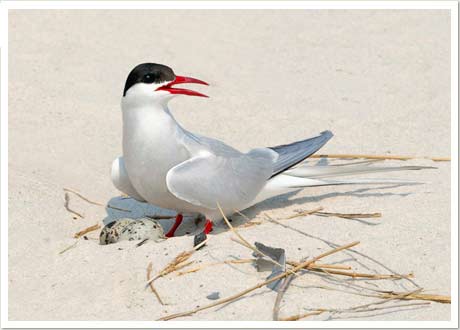|
| Arctic Tern |
PHOTO: 1 2 |
 |
|
 |
 |
| On average, only five pairs of Arctic Terns nest in Massachusetts, with a few of these nesting annually on Plymouth Beach. Differentiated from the Common Tern by its all red beak, longer tail and high-pitched call, the Arctic Tern nests alone at the edge of dunes, and aggressively defends its nest. The best places to look for Arctic Terns on Plymouth Beach are at the edge of Common Tern flocks roosting on tidal flats (Arctic Terns frequently stand apart) or on the high sandy beach on the bayside near the point. |
|
|